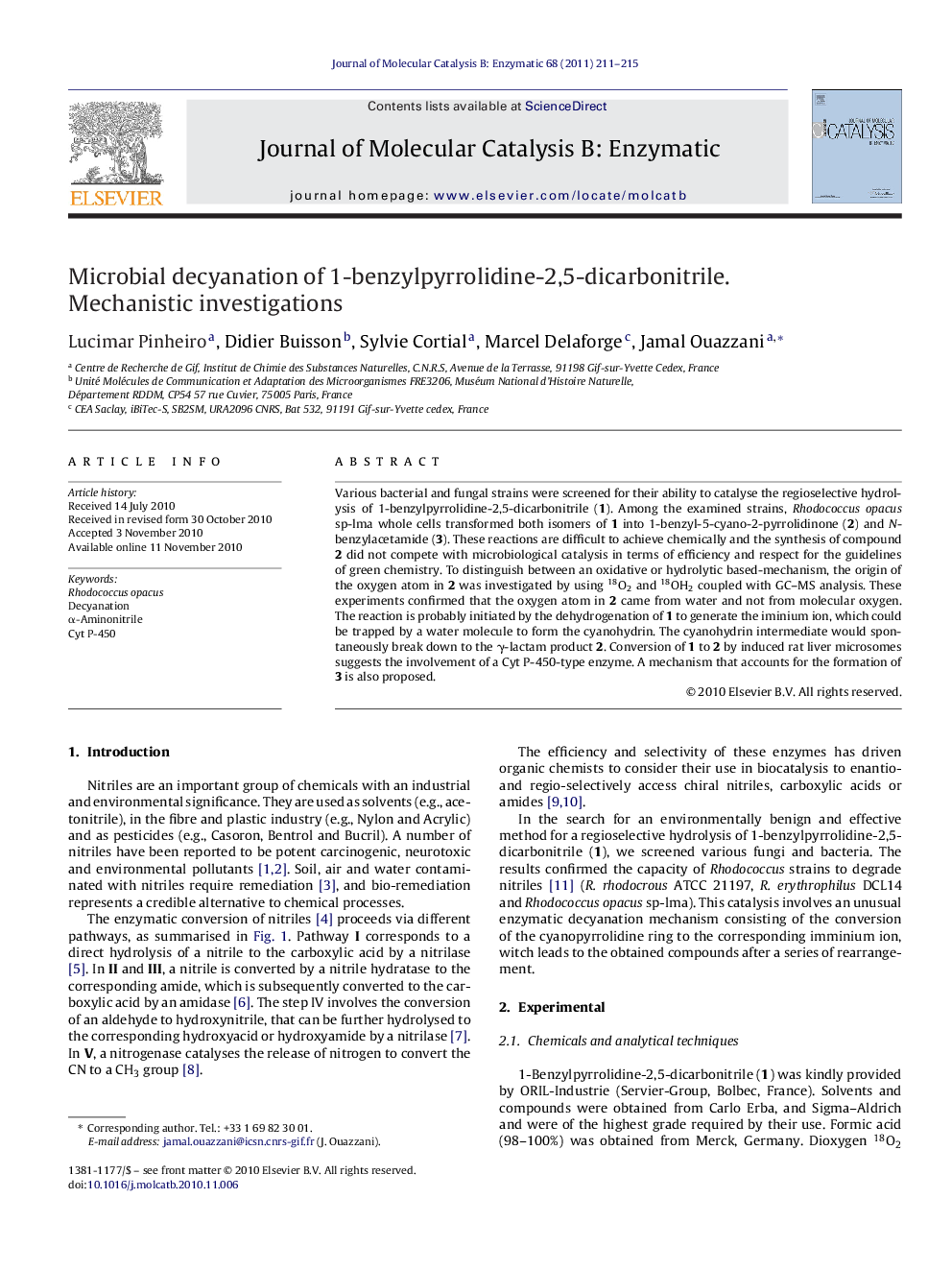| کد مقاله | کد نشریه | سال انتشار | مقاله انگلیسی | نسخه تمام متن |
|---|---|---|---|---|
| 70745 | 48844 | 2011 | 5 صفحه PDF | دانلود رایگان |

Various bacterial and fungal strains were screened for their ability to catalyse the regioselective hydrolysis of 1-benzylpyrrolidine-2,5-dicarbonitrile (1). Among the examined strains, Rhodococcus opacus sp-lma whole cells transformed both isomers of 1 into 1-benzyl-5-cyano-2-pyrrolidinone (2) and N-benzylacetamide (3). These reactions are difficult to achieve chemically and the synthesis of compound 2 did not compete with microbiological catalysis in terms of efficiency and respect for the guidelines of green chemistry. To distinguish between an oxidative or hydrolytic based-mechanism, the origin of the oxygen atom in 2 was investigated by using 18O2 and 18OH2 coupled with GC–MS analysis. These experiments confirmed that the oxygen atom in 2 came from water and not from molecular oxygen. The reaction is probably initiated by the dehydrogenation of 1 to generate the iminium ion, which could be trapped by a water molecule to form the cyanohydrin. The cyanohydrin intermediate would spontaneously break down to the γ-lactam product 2. Conversion of 1 to 2 by induced rat liver microsomes suggests the involvement of a Cyt P-450-type enzyme. A mechanism that accounts for the formation of 3 is also proposed.
Rhodococcus opacus sp-lma whole cells transformed 1-benzylpyrrolidine-2,5-dicarbonitrile (1) into 1-benzyl-5-cyano-2-pyrrolidinone (2) and N-benzylacetamide (3). The reaction is initiated by the dehydrogenation of 1 to the iminium intermediate, which is trapped by a water molecule to form a cyanohydrin that spontaneously break down to the γ-lactam product 2. A mechanism that accounts for the formation of 3 is also proposed.Figure optionsDownload as PowerPoint slideResearch highlights▶ In this paper we describe a new route for the microbial decyanation of cyanopyrrolidines. ▶ Comparison with liver microsomes suggested the implication of Cytochrome P-450 type enzymes. ▶ The decyanation involves a deshydrogenation step rather than the expected hydroxylation. ▶ In parallel, we also observed the microbial decyanation through the pyrollidine ring scission.
Journal: Journal of Molecular Catalysis B: Enzymatic - Volume 68, Issue 2, February 2011, Pages 211–215